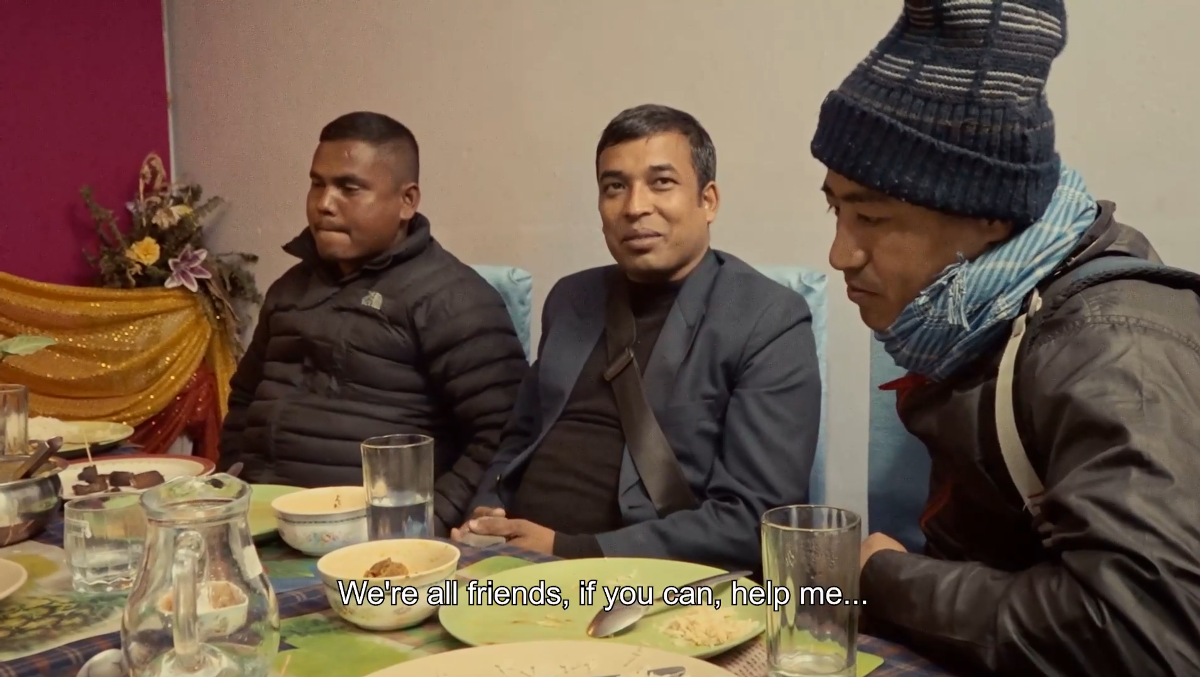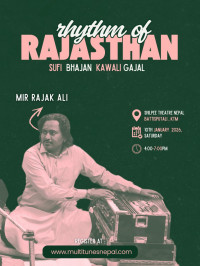Culture & Lifestyle
Into the migrant woes
‘The Riyalists’ is an unflinching and raw portrayal of the journey of four Nepali migrant workers.
Shranup Tandukar
For decades, the Nepali economy has been infamously sustained by the remittance sent by the Nepali migrant workers. In the decade from 2010 to 2020, income generated by migrant workers has increased three-fold from $2.54 billion to $8.75 billion. Seeking to delve into the heart of migrant workers’ journey into the Gulf states, writer-turned-filmmaker Kesang Tseten had released a trilogy of films about Nepali migrant workers in the Gulf more than a decade ago: ‘In Search of the Riyal’ (2009), ‘The Desert Eats Us’ (2010), and ‘Saving Dolma’ (2010).
“At least here[ in the Gulf], I can earn something, even if it means selling yourself, you can earn something,” says a Nepali migrant worker in the first film of the trilogy, ‘In Search of the Riyal’. He works in an animal farm with goats, cattle, and camels in the middle of a desert and has been out of Nepal for over 25 years already. Buffeted by the constant sandstorms, the migrant workers on the farm advise their fellow countrymen to never agree to work in the desert.
Over the last decade, there has been little change in the compulsions and aspirations of migrant workers. Recently, in February 2021, an investigation by The Guardian revealed how migrant workers from South Asian countries like Nepal, India, Pakistan, Bangladesh, and Sri Lanka were dying in large numbers as Qatar embarked upon a surge of developmental projects to prepare for the 2022 Fifa World Cup. Hardships, abuse, and exploitation have unfortunately become an inevitable reality for most Nepali migrant workers. Yet many youthful faces still aspire to pursue the migrant dream.
At the 19th Kathmandu International Mountain Film Festival(kimff) 2021, Kesang Tseten’s film ‘The Riyalists’ was internationally premiered online on December 10. The film, as a documentary genre, is one of the 40 films selected for the International Competition at kimff, which has adopted the tagline ‘Climate Karma’ as a theme for this year.
‘The Riyalists’ is an unflinching and raw portrayal of the journey of four Nepali migrant workers as they make their way into the Gulf States, the societal and financial forces that compel them to go, and their trip back home. The four Nepali migrant workers—Dhanbir, Bhoj, Prem BK, and Nabin—were previously featured in Tseten’s 2009 film, ‘In Search of the Riyal’. The film provides a powerful perspective to the nuances of migrant workers’ lives as it chronicles the beginning of their journey from hopeful youths to time-worn adults. Between the statistics of remittance and its contribution to Nepal’s GDP is the story of individual people forced to leave their families behind and toil away in foreign lands.
As an observational mode of documentary, ‘The Riyalists’ consists mostly of interviews with the migrant workers and their loved ones along with intimate glimpses into their personal lives and their communities. The four migrant workers are from different parts of eastern Nepal—Dhanbir from Tehrathum, Bhoj from Jhapa, Prem BK from Deurali, and Nabin from Gaighat—yet they converge, like almost all aspiring migrant workers, and meet each other in Kathmandu at Global Polytechnic Institute, a training centre for migrant workers.

As the film moves forward in a linear fashion, from 2008 to 2019, it first portrays how the four migrant workers were compelled to journey abroad by interviewing their close family members and showcasing their village lives. The prevalent reason for all of them to become migrant workers is the same—poor financial conditions of their families. “That’s why we have to work, whether we stay here or go abroad. We have to fill our stomach,” says Nabin. However, staying here in Nepal means that though they might be able to fill their stomach and survive, they won’t be able to secure a bright future for their children. “It’s not enough to survive. I have to think of the future, too,” contemplates Prem.
When the film moves forward in time to 2019, the four characters’ lives have diverged and splintered: half of them, Dhanbir and Nabin, are still working as migrant workers whereas the other half, Bhoj and Prem, are working in Nepal. Bhoj was forced to return back home due to personal reasons, after spending seven months in Dubai and one year in Qatar. Back home since then, he has tended to his older brother’s clothing factory as well as his own pig farm. Prem also returned to Nepal after spending two years abroad, however, his financial situation is still fragile. After returning, he took up his family business of silversmithing and has his own shop but the earnings are barely enough for his family to scrape by.
Dhanbir and Nabin, on the other hand, are still employed as migrant workers, yet still face problems of their own. Dhanbir left Nepal when his son was an infant and now his son has become 10-years-old. There is a disconnect between father and son when they converse and Dhanbir laments that his long periods of absence in his son’s life have caused such a rift between them. Nabin, meanwhile, was recently married and had two infant daughters when he moved abroad. In 2008, he was regretting having to go abroad leaving his wife without even spending a full year together as a married couple. By 2019, his first wife had left him, abandoning his two daughters, and he has remarried since then.
The film has successfully portrayed the personal lives of all the characters with the deserving sensitivity: there is no dramatisation and no exaggeration of events. The stories of the four characters fuse together, past and present, and flow together overcoming obstacles and struggles as the characters alter from naive youths into responsible adults. From marriage constraints to missing their children’s childhood, the migrant workers who continue to toil away in foreign lands sacrifice irreplaceable moments. The transformation of Dhanbir from a naive and jovial youth who looked lost in Tribhuvan International Airport before boarding his flight into a serious and sombre adult who once again makes his way abroad is bitingly emotional.
The film, in the end, stands as a testament to how the migrant dream of Nepalis is far from being unpopular: only recently in August 2021, remittance earnings hit an all-time high with Rs 961 billion. In the latter parts of the film, the three characters—Bhoj, Prem, and Nabin—meet for the first time in Dharan since their training days in Kathmandu. Bhoj is satisfied with his business in Nepal and financially stable. Nabin is still employed in an off-shore factory abroad and hopes to complete the building of his house with his earnings soon. On the other hand, money is tight for Prem and his worry for the future is apparent in his face. “If I were to go abroad again, I’d manage whatever is demanded of me,” says Prem. Urging Nabin to help him get a job, even one at an off-shore factory, he says, “My wife persists in telling me to go.”
The film is available for free online viewing on the kimff website (www.festival.kimff.org) till December 16, 2021.



 12.12°C Kathmandu
12.12°C Kathmandu













%20(1).jpg&w=300&height=200)

